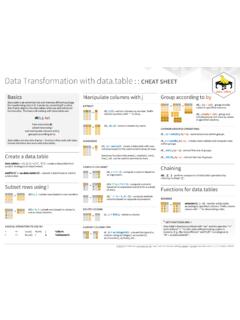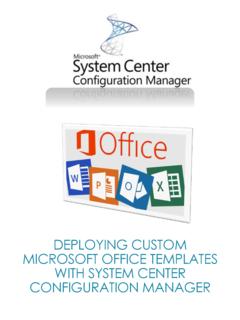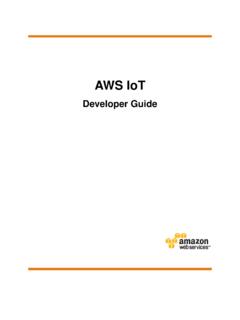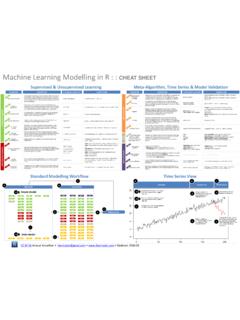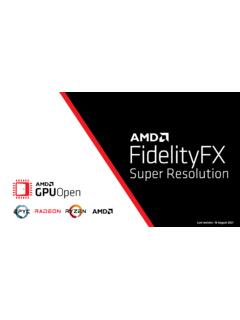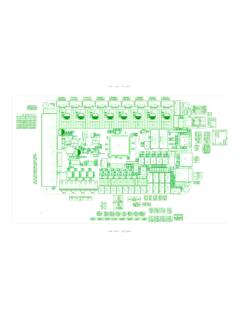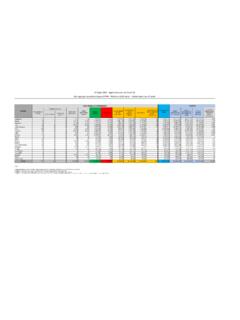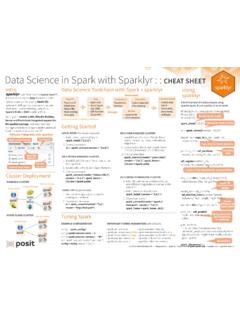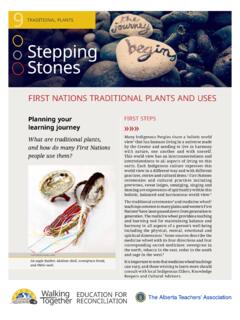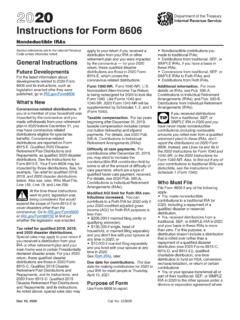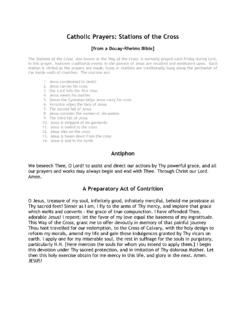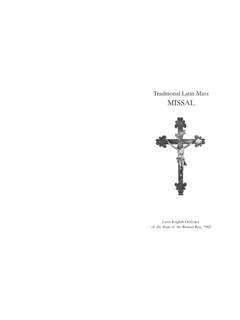Transcription of Source Han Sans Version 2
1 Source Han Sans Version Released on April 28, 2021. Overview Source Han Sans, designed by Ryoko Nishizuka ( ), is the companion sans serif style Pan-CJK type- face family to Source Han Serif, and is offered in seven slightly different weights ExtraLight, Light, Normal, Regular, Medium, Bold, and Heavy and in several OpenType/CFF-based deployment configurations to ac- commodate various system requirements or, in some cases, limitations. Pan-CJK fonts, such as those provid- ed by the Source Han typeface families, are intended to support and render the most important characters for Simplified Chinese, traditional Chinese, Japanese, and Korean.
2 The samples on this page demonstrate that the differences for each language can be subtle or striking, de- pending on the ideograph, yet they all clearly share the same typeface style, design, weight, and other char- acteristics that are not necessarily tied to a particular language. The first sample shows the completely shared form of U+4E00, along with the shared Simplified/ traditional Chinese and shared Japanese/Korean forms of U+5B57: . The second sample below shows, from left to right, the Simplified Chinese form of U+9AA8, its traditional Chinese (Taiwan) form, and the form shared by traditional Chinese (Hong Kong), Japanese, and Korean.
3 The third sample shows, also from left to right, the almost completely unshared Simplified Chinese, Tradition- al Chinese (Taiwan and Hong Kong), Japanese, and Korean forms of U+66DC: 1.. The fourth and final example shows, again from left to right, the completely unshared Simplified Chinese, traditional Chinese (Taiwan), traditional Chinese (Hong Kong), Japanese, and Korean forms of U+8FD4: The short passage shown below is Genesis 11:1 ( 11:1 in Simplified Chinese, 11:1 in traditional Chinese, 11:1 in Japanese, and 11:1 in Korean) displayed in six languages and in three of the seven weights: ExtraLight Now the whole world had one language and a common speech.
4 Regular Now the whole world had one language and a common speech.. Heavy Now the whole world had one language and a common speech.. The use of these open Source Pan-CJK fonts and their sources is covered under the terms of the SIL Open Font License, Version 2. The pages that follow provide excruciating technical details about the font resources that are included in this open Source project, and the information corresponds to Version Configurations Source Han Sans is provided in a number of possible deployment configurations, each of which is described below, along with typical usage scenarios.
5 Language-specific OpenType/CFF2 (OTF) variable fonts 10 font resources This deployment configuration is available in five languages Simplified Chinese, traditional Chinese (Tai- wan), traditional Chinese (Hong Kong), Japanese, and Korean and sets one language as the default (a de- fault language is required due to the single 'cmap' table), and the 'locl' (Localized Forms) GSUB feature is expected to be used to access glyphs that are appropriate for the other four supported languages. Five of the variable fonts differ only in that the default glyphs for ASCII (U+0020 through U+007E), U+00A0 ( ), U+00A5.
6 ( ), U+00AD ( ), U+2011 ( ), and U+20A9 ( ) are half-width instead of proportional, and the default glyph for U+2423 ( ) is half-width instead of full-width. These fonts include the additional HW identifier in their names. The half-width variable fonts contain only the Regular and Bold weights. The other five Pan-CJK vari- able fonts contains all seven of the original static weights. These fonts represent the most compact form that supports all languages and includes the complete set of glyphs, but this comes at the expense of requiring an application to properly support the 'locl' GSUB feature in order to display glyphs for languages other than the default one.
7 In addition to using such an application, a good example of which is Adobe InDesign, the text at the character, paragraph, or document level must also be properly language-tagged. This configuration also requires a system that supports OpenType CFF2. variable fonts. Language-specific OpenType/CFF (OTF) 45 font resources This deployment configuration contains the same set of fonts as the OpenType/CFF2 variable font configura- tion as 45 separate static fonts. Region-specific Subset OpenType/CFF2 (Subset OTF) variable fonts 5 font re- sources This deployment configuration includes five different subsets, and each subset includes only the glyphs that are necessary for Simplified Chinese, traditional Chinese (Taiwan), traditional Chinese (Hong Kong), Japa- nese, or Korean.
8 These fonts are considered the most broadly usable because the 'locl' GSUB feature is not required to access the region-specific glyphs. Instead, only the glyphs that are necessary for each region are included. This de- ployment configuration is recommended for users who need only the glyphs for a specific region, and also desire the smallest possible footprint. These fonts are expected to behave the same as conventional Simpli- fied Chinese, traditional Chinese, Japanese, or Korean fonts. This configuration also requires a system that supports OpenType CFF2 variable fonts.
9 Region-specific Subset OpenType/CFF (Subset OTF) 35 font resources This deployment configuration contains the same set of fonts as the Region-specific Subset OpenType/CFF2. variable font configuration as 35 separate static fonts. 3. OpenType/CFF2 variable font Collection (OTC) 2 font resources This deployment configuration represents a best of all possible worlds in that there are separate font in- stances for each language, and while each font instance necessarily specifies a default language, the 'locl'. GSUB feature can still be used to access the glyphs for the other languages.
10 The OTC files contain the 5 lan- guage-specific variable OTFS ( ) and 5 half-width variable OTFs (SourceHanSansHW-VF. ttc). These fonts offer the greater flexibility in that there is a single font resource that includes all font instances, each with a different one of the five languages serving as the default. Users of these fonts simply choose the appropriate font in an application's font menu, and the glyphs that are suitable for that language are dis- played. However, OpenType/CFF and CFF2 Collections are not supported everywhere.

